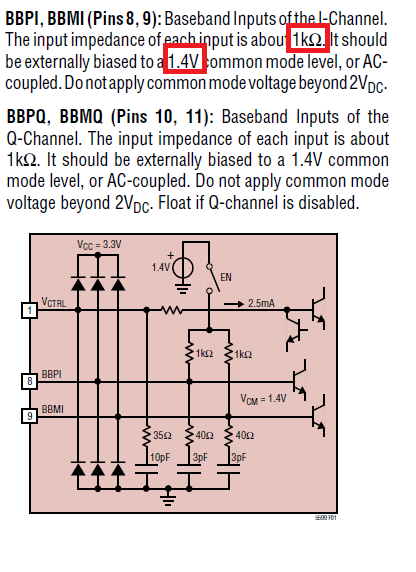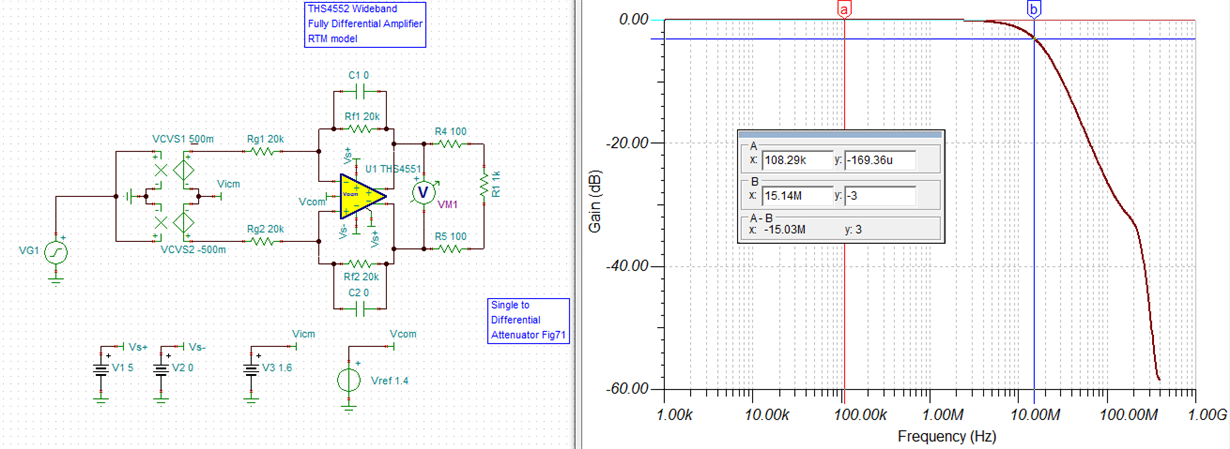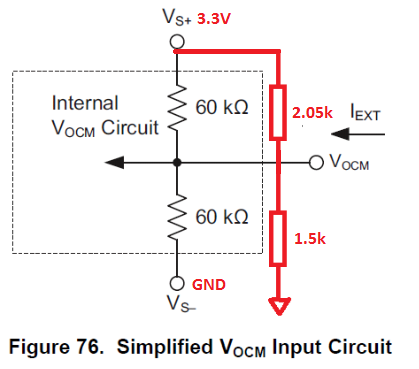Other Parts Discussed in Thread: TINA-TI
Hello all,
In my project, I'm using a IQ Modulator (LTC5599) and a IQ modem (CMX7164), and I have two "problems" interfacing the IQ outputs of the modem to the IQ modulator inputs.
1. The DC common mode voltage of the modem's I or Q outputs is 1.6V, while the DC level required for the modulator is 1.4Vdc
2. The maximum load of the modem's I or Q outputs is 20kohm, while the input impedance of the modulator is about 1kohm
Here is the IQ Input, and outputs specs:
Modulator's inputs:
Modem's Outputs:
I thought about using a dual fully differential amp (such as the THS4552), because the IQ interface is differential, and I want to use a single chip for the solution. By using this solution, I can interface the modem to the modulator using a single chip, and the 1.4V common mode DC level can be adjusted using the VCOM pin of the FDA
I do not have much of experience in using FDAs...by looking at application notes of different FDAs, I have noticed that all of them have a relatively low feedback resistors (1-2kohms), which create a input impedance of a several kohm, while I need to keep the input impedance above 20kohm...at least.
Question 1:
Can I use a larger values of feedback resistors? (20-100kohm) - what would be the consequences on the FDA performance?
Question 2:
Can someone offer a different/better solution for this matter?
One more thing worth to mention - My baseband bandwidth is relatively low, only a few KHz wide.
Thank you all!
David





 Thanks,
Thanks,